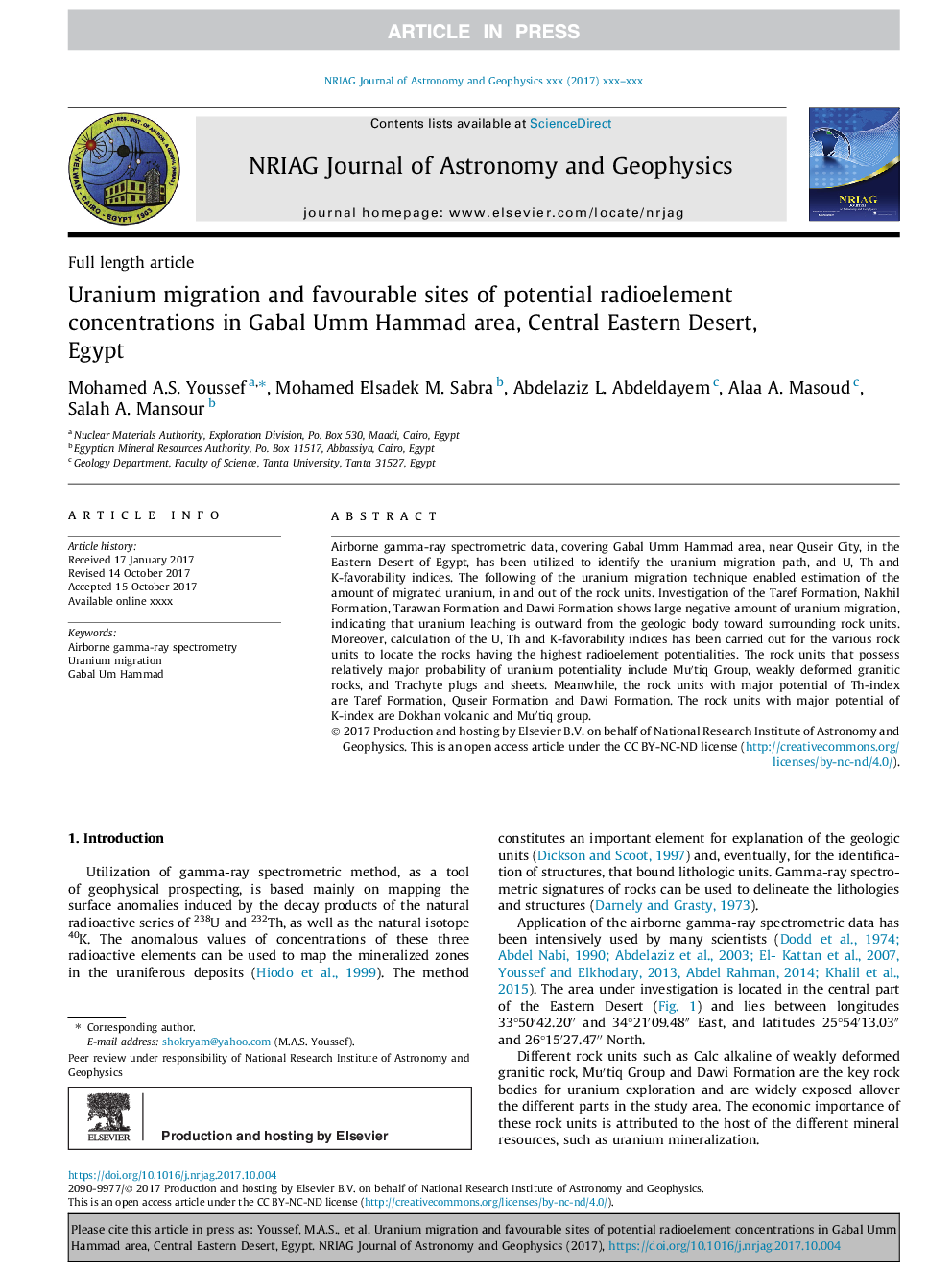| Article ID | Journal | Published Year | Pages | File Type |
|---|---|---|---|---|
| 8141653 | NRIAG Journal of Astronomy and Geophysics | 2017 | 11 Pages |
Abstract
Airborne gamma-ray spectrometric data, covering Gabal Umm Hammad area, near Quseir City, in the Eastern Desert of Egypt, has been utilized to identify the uranium migration path, and U, Th and K-favorability indices. The following of the uranium migration technique enabled estimation of the amount of migrated uranium, in and out of the rock units. Investigation of the Taref Formation, Nakhil Formation, Tarawan Formation and Dawi Formation shows large negative amount of uranium migration, indicating that uranium leaching is outward from the geologic body toward surrounding rock units. Moreover, calculation of the U, Th and K-favorability indices has been carried out for the various rock units to locate the rocks having the highest radioelement potentialities. The rock units that possess relatively major probability of uranium potentiality include Muâ²tiq Group, weakly deformed granitic rocks, and Trachyte plugs and sheets. Meanwhile, the rock units with major potential of Th-index are Taref Formation, Quseir Formation and Dawi Formation. The rock units with major potential of K-index are Dokhan volcanic and Muâ²tiq group.
Keywords
Related Topics
Physical Sciences and Engineering
Physics and Astronomy
Astronomy and Astrophysics
Authors
Mohamed A.S. Youssef, Mohamed Elsadek M. Sabra, Abdelaziz L. Abdeldayem, Alaa A. Masoud, Salah A. Mansour,
